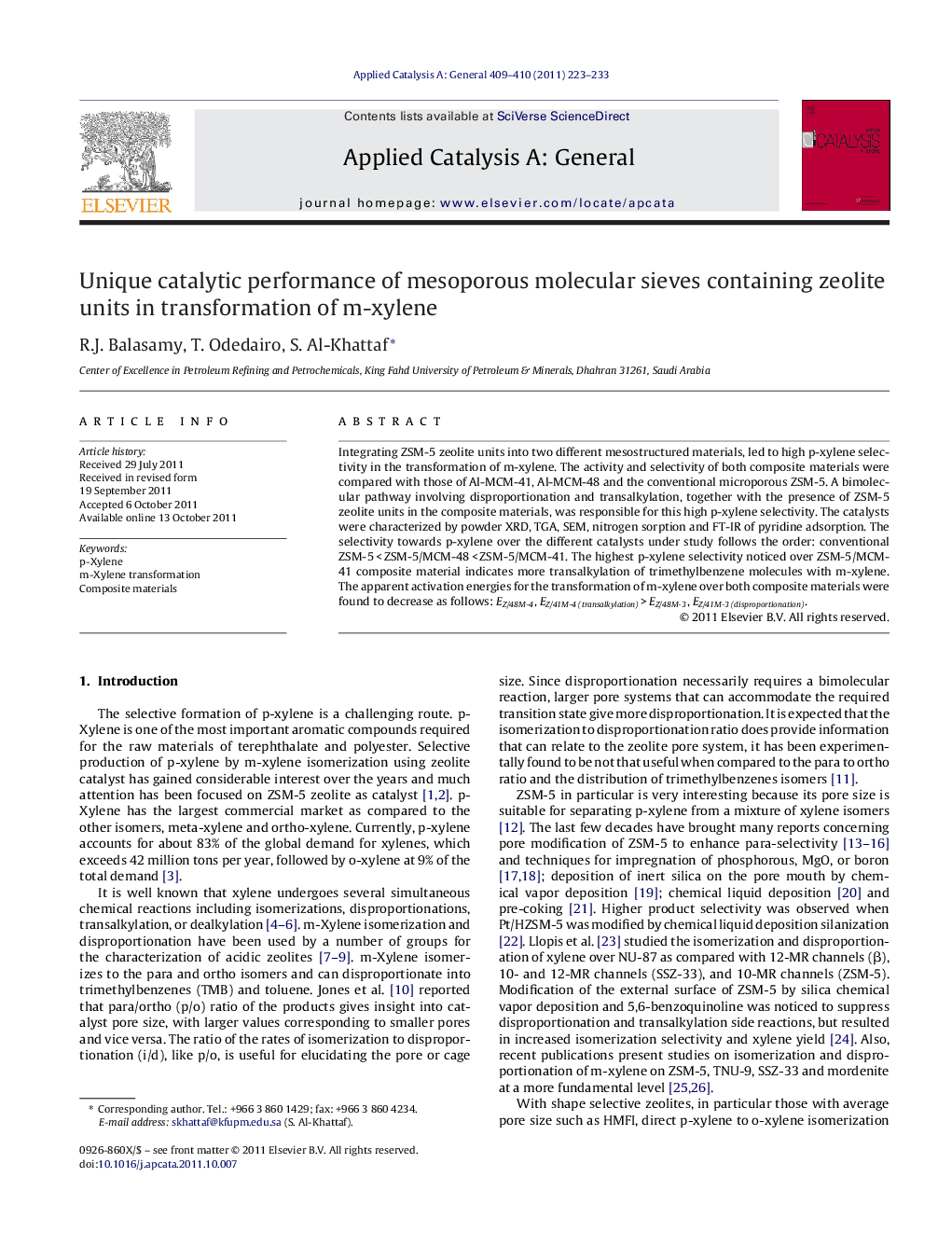| Article ID | Journal | Published Year | Pages | File Type |
|---|---|---|---|---|
| 41079 | Applied Catalysis A: General | 2011 | 11 Pages |
Integrating ZSM-5 zeolite units into two different mesostructured materials, led to high p-xylene selectivity in the transformation of m-xylene. The activity and selectivity of both composite materials were compared with those of Al-MCM-41, Al-MCM-48 and the conventional microporous ZSM-5. A bimolecular pathway involving disproportionation and transalkylation, together with the presence of ZSM-5 zeolite units in the composite materials, was responsible for this high p-xylene selectivity. The catalysts were characterized by powder XRD, TGA, SEM, nitrogen sorption and FT-IR of pyridine adsorption. The selectivity towards p-xylene over the different catalysts under study follows the order: conventional ZSM-5 < ZSM-5/MCM-48 < ZSM-5/MCM-41. The highest p-xylene selectivity noticed over ZSM-5/MCM-41 composite material indicates more transalkylation of trimethylbenzene molecules with m-xylene. The apparent activation energies for the transformation of m-xylene over both composite materials were found to decrease as follows: EZ/48M-4, EZ/41M-4 (transalkylation) > EZ/48M-3, EZ/41M-3 (disproportionation).
Graphical abstractFigure optionsDownload full-size imageDownload high-quality image (135 K)Download as PowerPoint slideHighlights► The effect of mesoporous materials containing ZSM-5 is reported for transformation of m-xylene. ► The presence of mesopores led to a high p-xylene selectivity. ► p-Xylene selectivity follows the order: ZSM-5 < ZSM-5/MCM-48 < ZSM-5/MCM-41.
